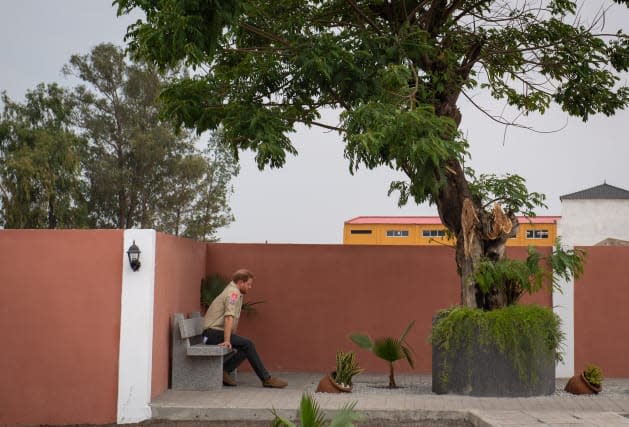Harry in emotional pilgrimage to retrace mother’s steps through Angola minefield

The Duke of Sussex has made an “emotional” pilgrimage to retrace the steps of his mother Diana, Princess of Wales – who famously walked through a partially cleared Angolan minefield.
During a day of symbolism that saw Harry wear body armour and a protective mask as Diana had done to watch a de-mining team at work, and tour an orthopaedic unit she visited – he said her memory remains with him “daily” and her “legacy” lived on.
The duke spoke candidly about his trip to an orthopaedic centre, in the Angolan city of Huambo, named in the princess’ honour, saying the visit was “deeply personal and meaningful” to him.
He delivered a call to action to help rid the world of landmines, and said Angola’s continued problem with the buried munitions would likely have been solved if his mother had lived.
In 1997, Diana strode through a cleared path in a Huambo minefield, and the images of her in body armour and a mask gave the anti-landmine campaign global recognition.
In 1997, Diana, Princess of Wales visited Huambo, Angola, to bring global attention to the effect of landmines on people’s lives.
22 years on, The Duke walked along the bustling street which was once the minefield where his mother was pictured. pic.twitter.com/r8jOsCISf1
— The Royal Family (@RoyalFamily) September 27, 2019
The site has since been transformed into a wide residential road, complete with a school, called Avenida 28 de Maio – but affectionately known amongst locals as Princess Diana Street.
Harry followed her steps and turned off the road, and then sat in quiet contemplation on a nearby bench by one of the few remaining trees from his mother’s visit.
In a speech to mark his visit, Harry told dignitaries and schoolchildren: “It’s been quite emotional retracing my mother’s steps along this street 22 years on and to see the transformation that has taken place, from an unsafe and desolate place into a vibrant community of local businesses and colleges.”

Nearby were a row of saplings along one side of the road that followed the line of the landmines laid to protect a military supply depot during the country’s civil war, which raged from 1975 to 2002.
Halo Trust, a landmine clearance charity, named the site minefield H013 and began clearing it three years before the princess visited finally completing their work in 2005.
The duke added: “Twenty-two years after my mother visited Angola, there are still more than one thousand minefields in this beautiful country that remain to be cleared.
A post shared by The Duke and Duchess of Sussex (@sussexroyal) on Sep 27, 2019 at 5:04am PDT
“I wonder if she was still alive whether that would still be the case, I’m pretty sure she would have seen it through.”
A number of major countries – Russia, China and the United States – have not signed up to the global landmine treaty ban, and Harry highlighted the UK’s commitment to support Angola’s ambition to be landmine free by 2025.
He added: “I call on all those countries that had their names stamped on these weapons, but who haven’t helped in the clean-up, to please commit to ensuring we meet our collective goal.”
Later Harry said he was “humbled and honoured” that his mother’s anti-landmine work continued to inspire others when he visited a nearby orthopaedic centre which she visited in 1997, and he renamed in her honour.

Speaking in the grounds of the institution which is undergoing renovation and aims to become Angola’s national centre of excellence in orthopaedic care, the duke said: “This visit is obviously deeply personal and meaningful to me.
“When she visited this centre during the conflict it was full of men, women and even children injured by landmines.”
Harry ended with the words: “It has been an honour to retrace my mother’s steps today, I lost her 22 years ago, but the memory of her is with me daily and her legacy lives on which is why I’m so happy to name this centre, the Princess Diana Orthopaedic Centre.”

Harry’s mother never saw her work to help outlaw landmines come to fruition as she died the year of her Africa visit, a few months before the international treaty to outlaw the weapons was signed.
The duke had started the day in Dirico, south-east Angola, where he donned the protective body armour to walk on a partially cleared minefield and later described the munitions as the “unhealed scar of war”.


